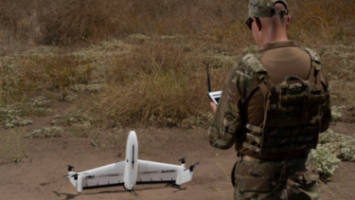Global Solar-Powered UAV Market 2017-2021 - Key Vendors are AeroVironment, Airbus, Alphabet, Facebook & Thales Group - Research and Markets
The "Global Solar-powered UAV Market 2017-2021" report has been added to Research and Markets' offering.
The global solar-powered UAV market to grow at a CAGR of 12.65% during the period 2017-2021.
Global Solar-powered UAV Market 2017-2021, has been prepared based on an in-depth market analysis with inputs from industry experts. The report covers the market landscape and its growth prospects over the coming years. The report also includes a discussion of the key vendors operating in this market.
Unmanned aerial vehicles (UAVs) or drones are autonomous aircraft, which are remotely controlled from the ground or through onboard computers. Conventional UAVs are available in various sizes. While the large-sized ones, which are employed for tactical missions, are powered by internal combustion engines, smaller ones are mainly powered by electric motors. However, since the last decade, the advent of new technologies has led to the development of UAVs powered by photovoltaic cells, hydrogen fuel cells, and hybrid-electric propulsions engines. Solar-powered UAV platforms use photovoltaic panels to absorb energy from the sun and convert it into electrical energy to thrust the engines.
The use of proton exchange membrane (PEM) fuel cell system in a solar-powered UAV allows it to achieve an uninterrupted flight for over six months. The Helios Prototype was one of the earliest solar-powered UAVs (developed by AeroVironment in 1999 with funding from the National Aeronautics and Space Administration (NASA)), which used PEM-based fuel system. Solar-powered UAVs find their applications in defense and commercial sectors.
Key vendors
- AeroVironment
- Airbus
- Alphabet
- Thales Group
Other prominent vendors
- AC Propulsion
- Boeing
- DJI
- Lockheed Martin
- Silent Falcon UAS
- Sunlight Photonics
Key Topics Covered:
Part 01: Executive Summary
Part 02: Scope Of The Report
Part 03: Research Methodology
Part 04: Introduction
Part 05: Market Landscape
Part 06: Five Forces Analysis
Part 07: Market Segmentation By End-User
Part 08: Regional Landscape
Part 09: Decision Framework
Part 10: Drivers And Challenges
Part 11: Market Trends
Part 12: Vendor Landscape
Part 13: Appendix
For more information about this report visit https://www.researchandmarkets.com/research/q6vmw9/global
View source version on businesswire.com: http://www.businesswire.com/news/home/20171103005630/en/





